Naruto: Every Tailed Beast & Jinchuriki In The Series
Table of Contents
The mythology of the Tailed Beasts and their Jinchuriki is central to the Naruto story, but you don’t need a catchy song to remember them all.
You Are Reading :Naruto Every Tailed Beast & Jinchuriki In The Series
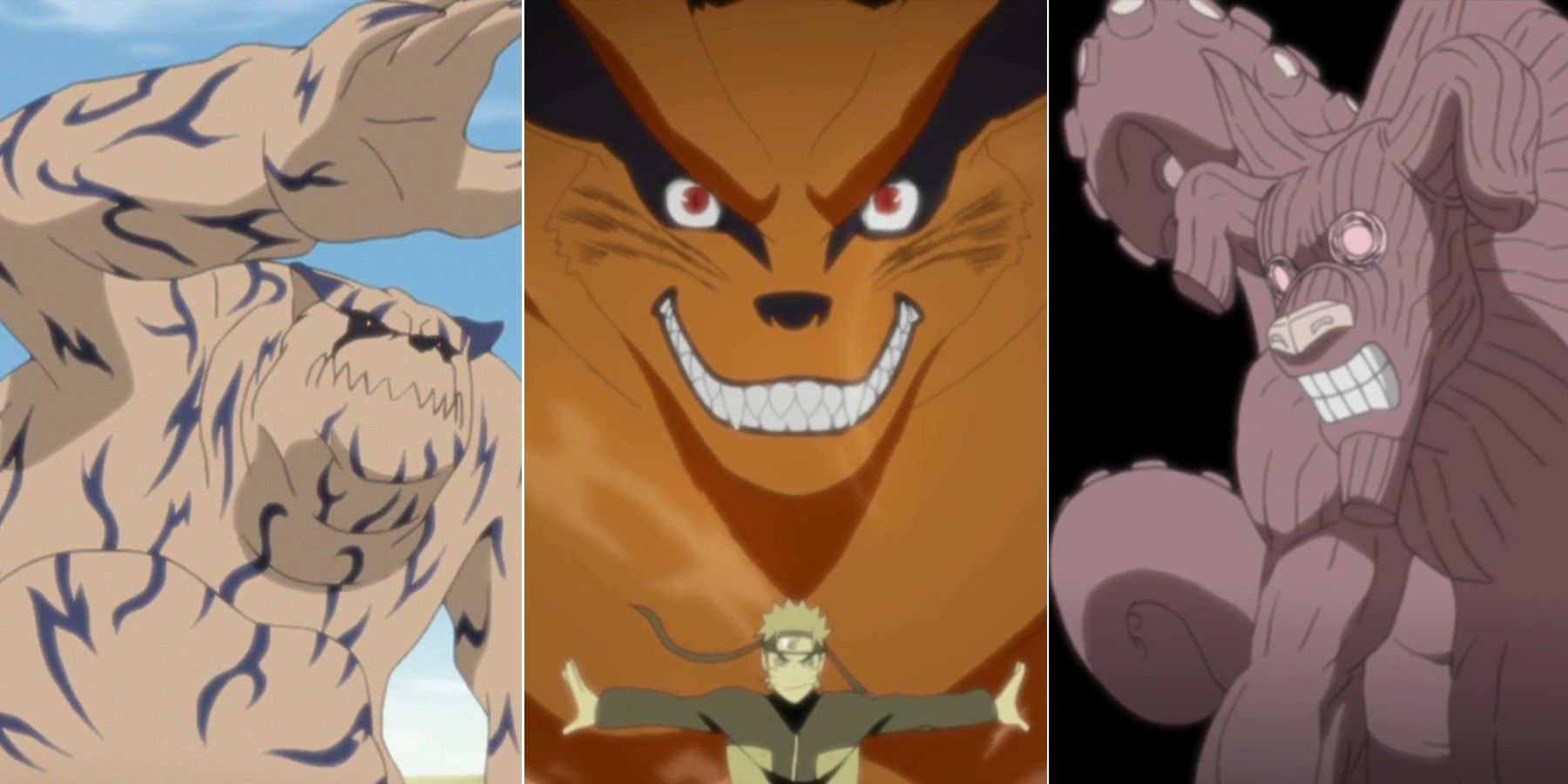
Here are all of the Tailed Beasts in Naruto, as well as the Jinchuriki who carry them. The world of Naruto is full of flashy chakra blasts and monstrous summons, but one of Masashi Kishimoto’s more inventive concepts are the Bijuu, or Tailed Beasts. These creatures originated from the chakra tree of the villainous Otsutsuki clan, which transformed into the incredibly powerful ten-tailed monster. In order to avert widespread destruction, the Sage of Six Paths split the ten-tails into nine smaller creatures, which would go on to become the fabled Tailed Beasts of Naruto.
These creatures either roam the land as wild, untamed demons, or are used as weapons of war by the various ninja villages, maintaining the balance of power between nations. In order to harness the immense power held within each of the Bijuu, the beasts would often be contained within a human host, known as a Jinchuriki. The joining of human and beast creates a symbiotic relationship between the two. Some pairings are harmonious and respectful, while others emphasize the servitude of the Tailed Beasts, turning them against humanity. Depending on the skill of the Jinchuriki, the creature’s power can be drawn out in battle, but loss of control results in the beast escaping its human cell and going on a rampage.
Although Naruto and the Nine-Tails are obviously the most prominent Bijuu and Jinchuriki tandem in the series, Kishimoto eventually introduces the full set, who become increasingly important later in the story. As Naruto’s Tailed Beast lore became more complex, the anime released a devilishly catchy “Bijuu Counting Song” to help fans remember the basics, which is well worth checking out for comedy value alone. These are all the tailed beasts of Naruto.
One-Tails – Shukaku
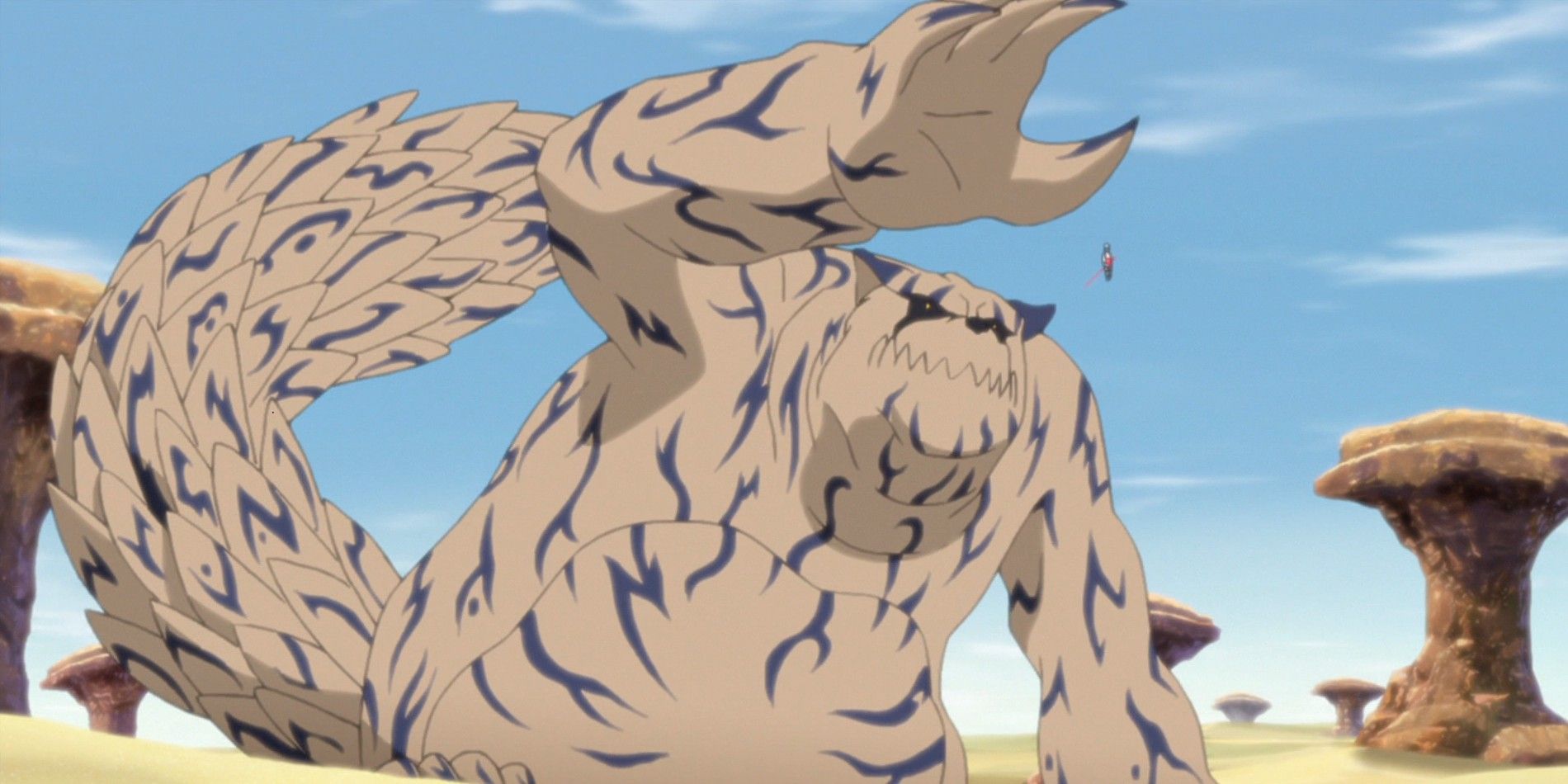
Shukaku is most closely affiliated with the Hidden Sand village, and his first known Jinchuriki was the priest Bunpuku. The clergyman was followed by another host not important enough to be named, before Shukaku was placed inside an unborn Gaara, still in his mother’s womb. Shukaku’s physical design is based on a tanuki – a Japanese raccoon dog. He’s also an immensely proud Bijuu, constantly trying to compensate for being single-tailed, and considers Kurama his fiercest rival. In terms of abilities, Shukaku specializes in manipulating sand, making him the perfect mascot of his village and an ideal companion for Gaara. Their relationship began uneasily due to Shukaku’s ability to control Jinchuriki in their sleep, but as Gaara grew stronger, he was able to utilize the Bijuu’s power more effectively. Finally, inspired by Naruto and Kurama, Gaara began treating Shukaku as an equal, not a weapon.
Two-Tails – Matatabi
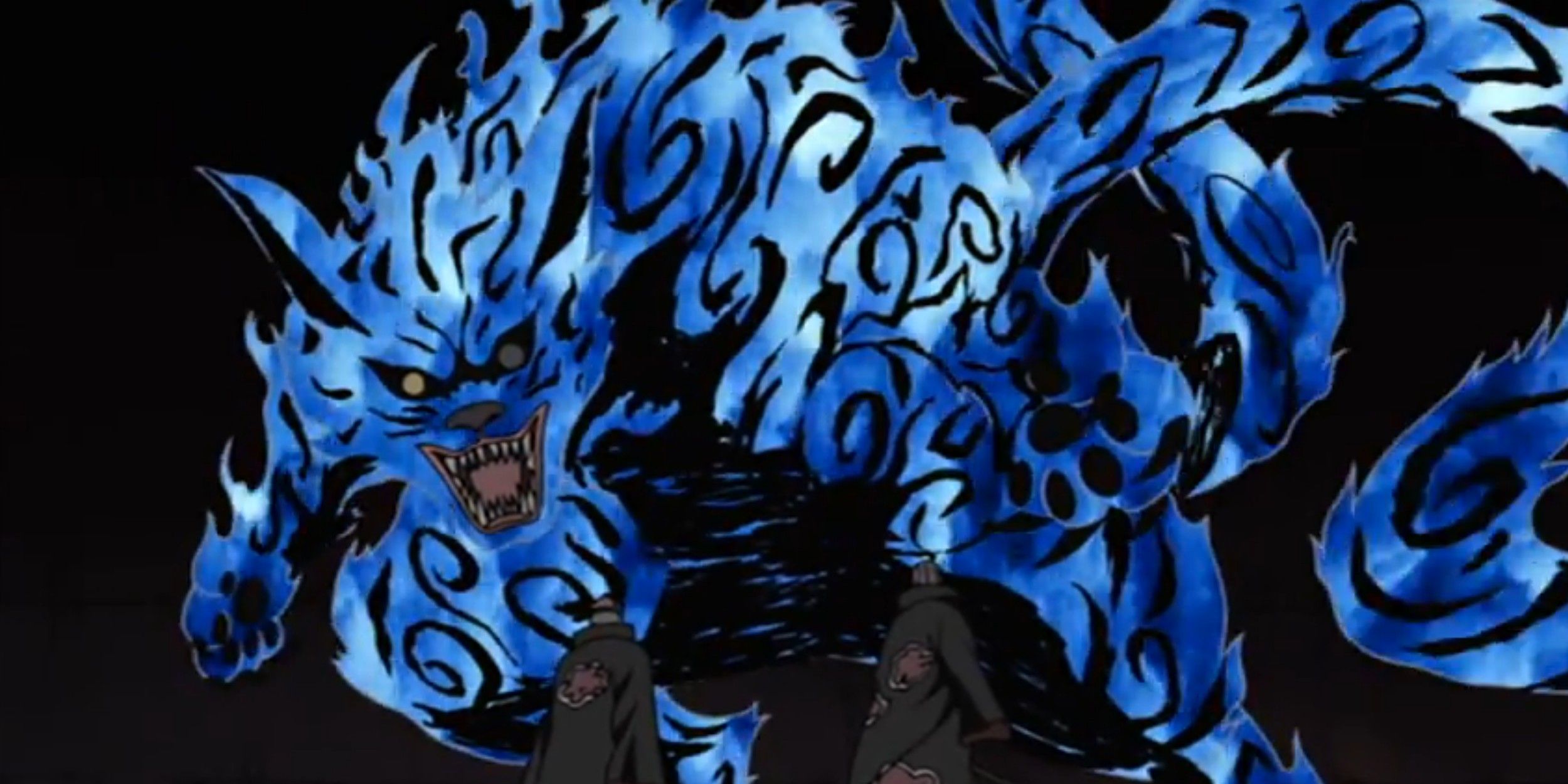
Matatabi is a prime example of how tailed beasts were exploited by ninja in past ages. Captured by Konoha’s Hashirama Senju, Matatabi was sold to the Hidden Cloud as part of a deal supposed to foster peace and balance between the five major villages. The only known Matatabi Jinchuriki is Yugito Nii, who inherited the monster as a child. Yugito would go on to become a Jonin in her village, learning control over her Bijuu – a process potentially made easier by Matatabi being one of the less aggressive tailed beasts. Matatabi bears the appearance of two mythological Japanese folk monsters – the Bakeneko and the Kasha, but the Naruto version is covered in blue flame (because why not). As implied by its design, Matatabi uses fire-based techniques, arguably making the creature a better fit for Konoha than the Hidden Cloud.
Three-Tails – Isobu
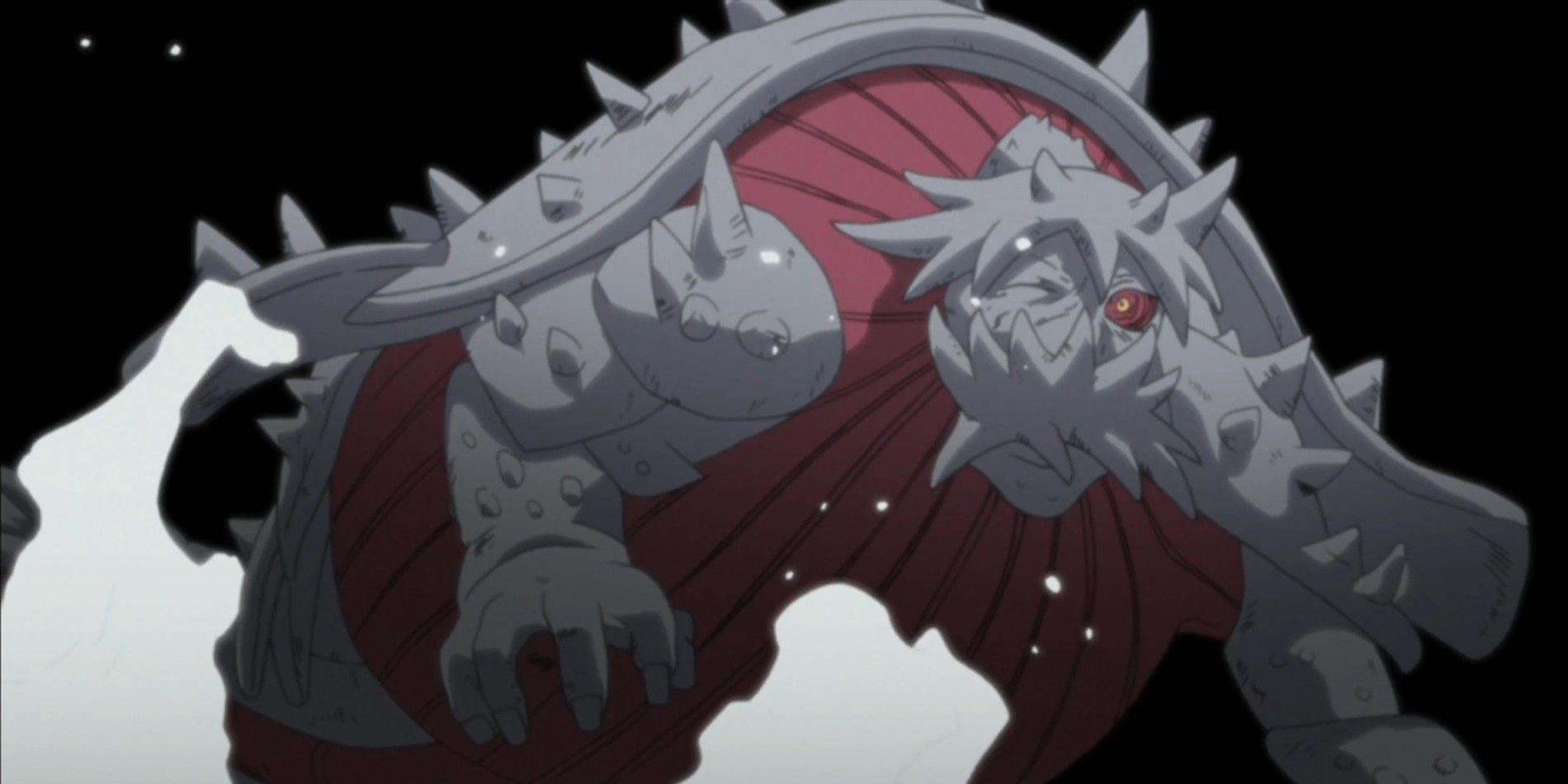
Like Matatabi, Isobu was sold by Hashirama as part of the Five Kage Summit agreement, this time to the Hidden Mist village. When war inevitably broke out, Isobu was forcibly sealed within Konoha’s Rin Nohara with the intention of releasing her upon an unsuspecting Leaf. Aware of the plot, Rin sacrificed herself so she wouldn’t accidentally hurt the people she loved. When a Jinchuriki dies, their tailed beast restores over time, and the revived Isobu was eventually placed into Yagura Karatachi, the Hidden Mist’s Fourth Mizukage. Isobu is loose in the wild when introduced in the Naruto timeline, meaning Yagura must’ve died and Isobu was restored a second time. Isobu primarily uses water techniques, explaining the beast’s long-standing affiliation with the Hidden Mist.
Four-Tails – Son Goku
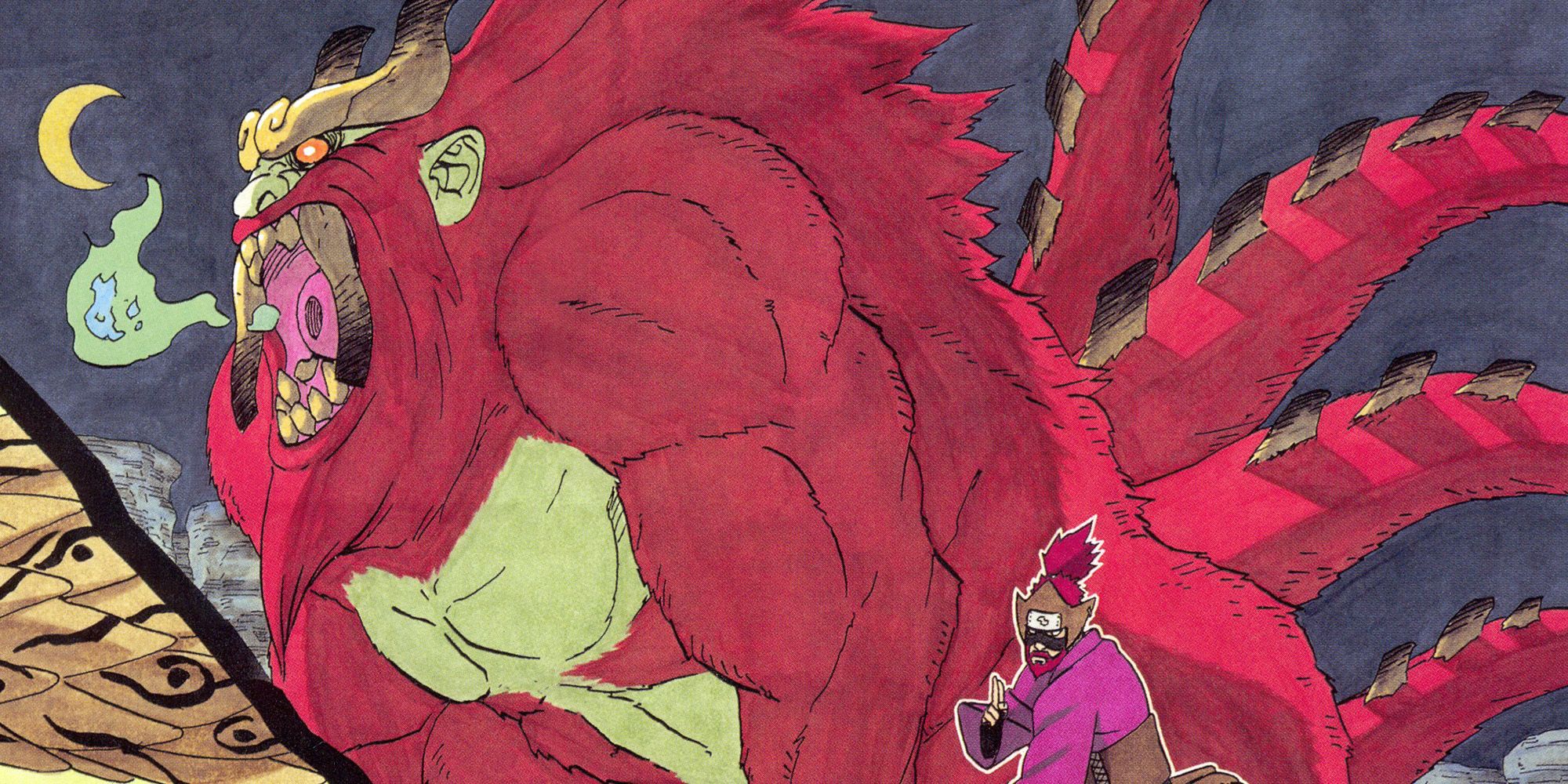
Son Goku was sold to the Hidden Rock village and came to be sealed within a ninja called Roshi. Compared to many Bijuu/Jinchuriki pairings, Roshi and Son Goku shared a respectful relationship, but the shinobi came to regret never learning his beast’s true name. Resembling a monkey, Son Goku was inspired by the Monkey King character from the legendary Chinese story Journey to the West. It’s impossible to ignore the connection to Dragon Ball too, which Masashi Kishimoto has admitted was a huge influence upon Naruto. Son Goku’s signature techniques were lava-based, and this power is later adopted by Naruto. By the end of the original series, a piece of each tailed beast’s chakra resides within Naruto Uzumaki, allowing him to combine the Rasengan with Son Goku’s lava.
Five-Tails – Kokuo
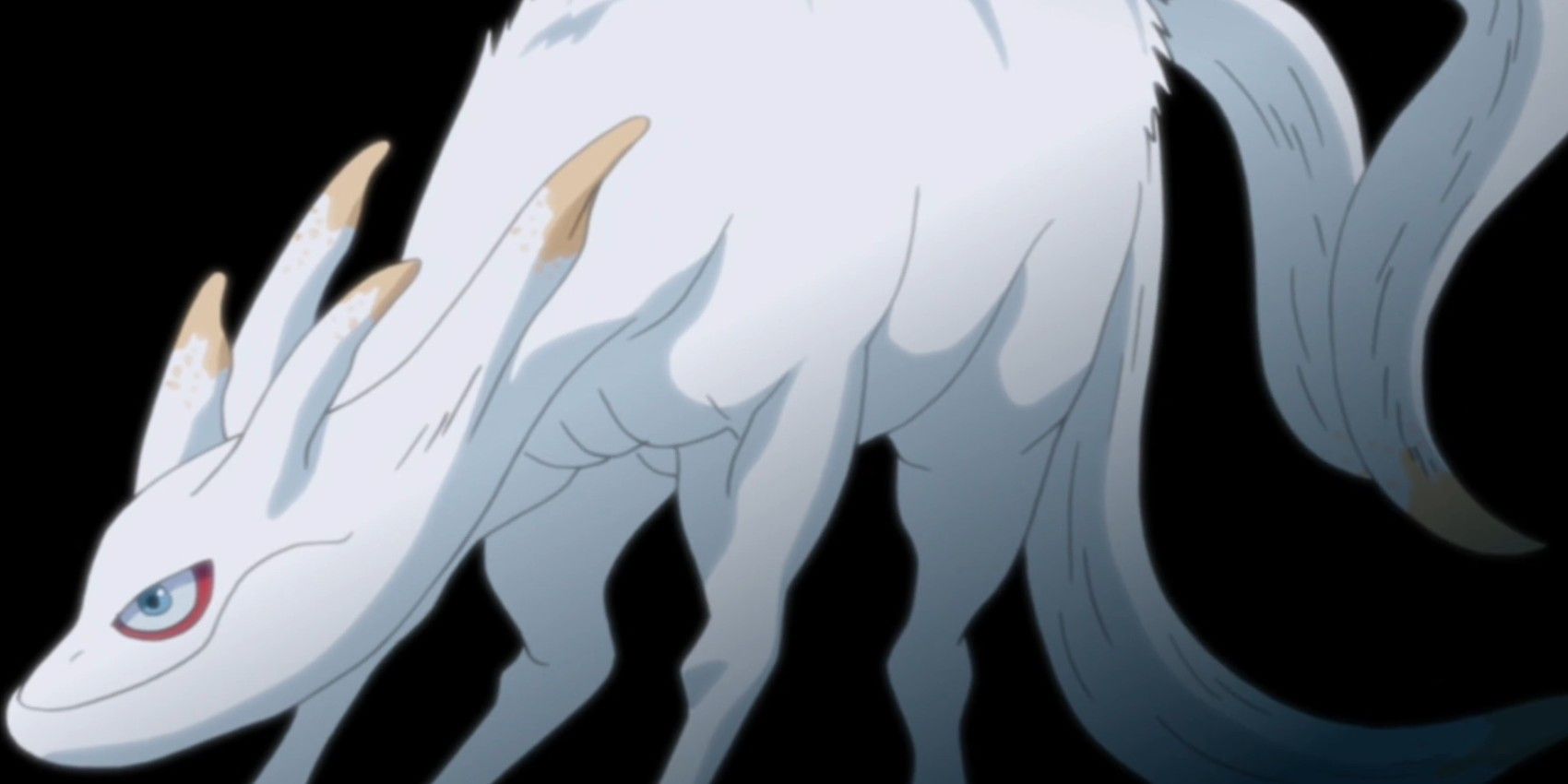
Kokuo joined Son Goku in the Hidden Rock and eventually passed to a powerful ninja known as Han. Like many other Jinchuriki, Han was killed when the Akatsuki (secretly led by the evil Madara Uchiha) began collecting the Tailed Beasts, forcibly extracting each critter from their human hosts. Kokuo is one of the less prominent Bijuu in Naruto, but is seen using steam nature release (a blend of fire and water) – even though it seems to prefer a quiet life in the forest. Where most of Naruto’s tailed beasts are based on mythical monsters and legends, Kishimoto revealed that Kokuo is a mixture of a horse and dolphin. Boruto: Naruto Next Generations reveals that Kokuo, along with Matatabi and Chomei, distanced themselves from humanity after Naruto freed them.
Six-Tails – Saiken
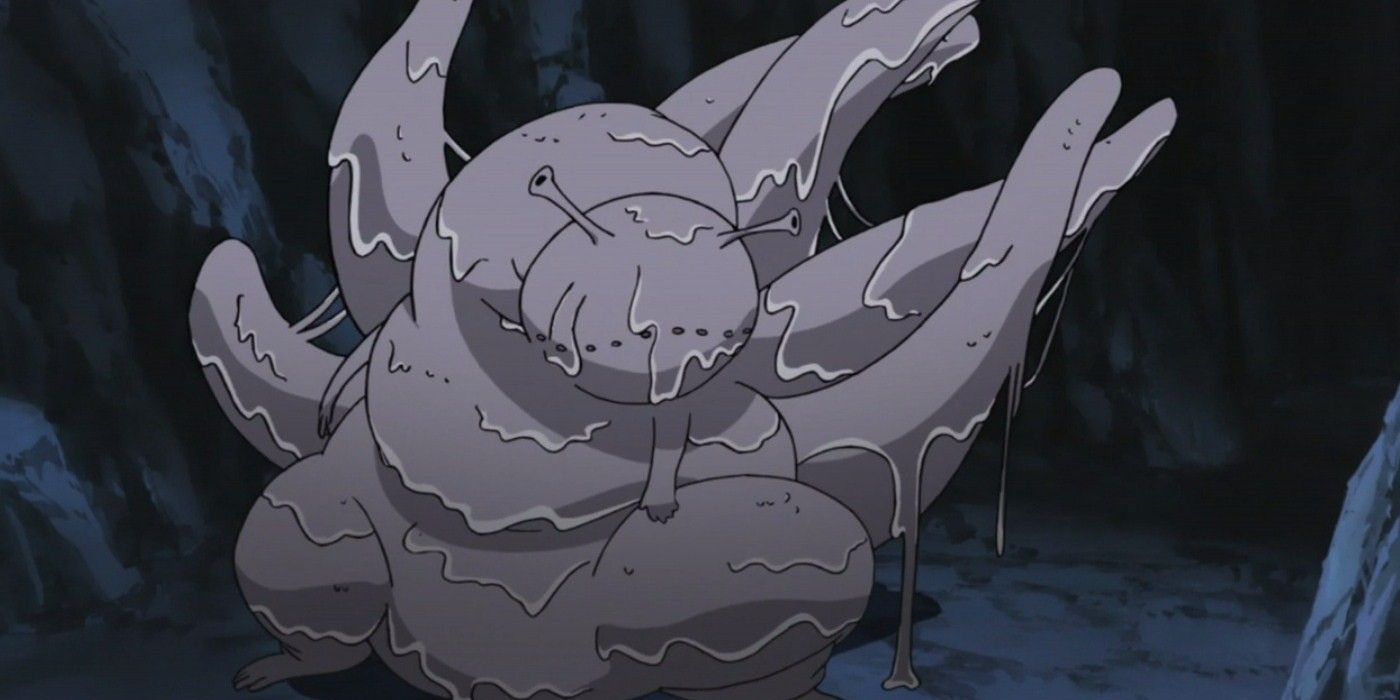
Along with Isobu, Saiken belonged to the Hidden Mist village, the idea being that each village’s beasts would total roughly nine tails (apart from the Sand). This was to keep the power balance relatively equal, as the more tails a Bijuu possesses, the stronger they’re considered to be. Saiken was sealed within Utakata, who began as a Hidden Mist villager but later abandoned his home during their dark “Bloody Mist” phase. Utakata was another Jinchuriki killed by the Akatsuki for their inner beast, and the bubble-wielding ninja starred in a memorable Naruto filler arc, which fleshed out his story. Saiken possesses water-based abilities, a slug-like appearance, and can attack with sticky and corrosive substances.
Seven-Tails – Chomei
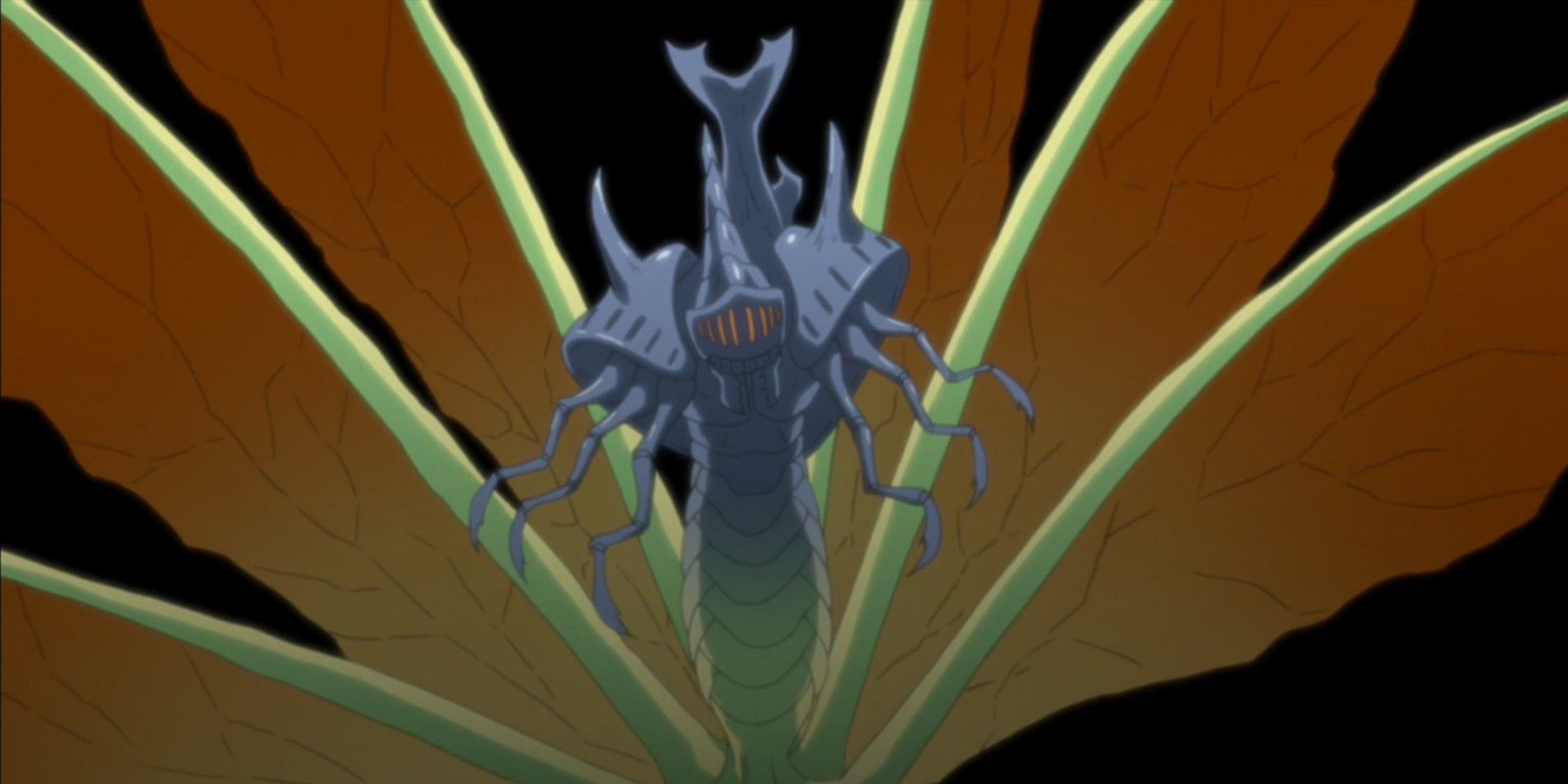
Chomei was formerly sealed within Fu, a female ninja from the Hidden Waterfall, after being sold to the village by Hashirama. This was unusual, since the Waterfall isn’t one of Naruto’s five major nations, but were considered powerful enough to be included in the arrangement. Naruto flashbacks show each of the tailed beasts as babies, soon after their creation by the Sage of Six Paths, but while most of these young creatures are cuter, smaller versions of their present-day selves, Chomei actually took a larval state, reflecting its insect-like design as an adult. Chomei is similar to a Japanese rhinoceros beetle, and compared to its Bijuu kin, is remarkably placid and laid-back.
Eight-Tails – Gyuki
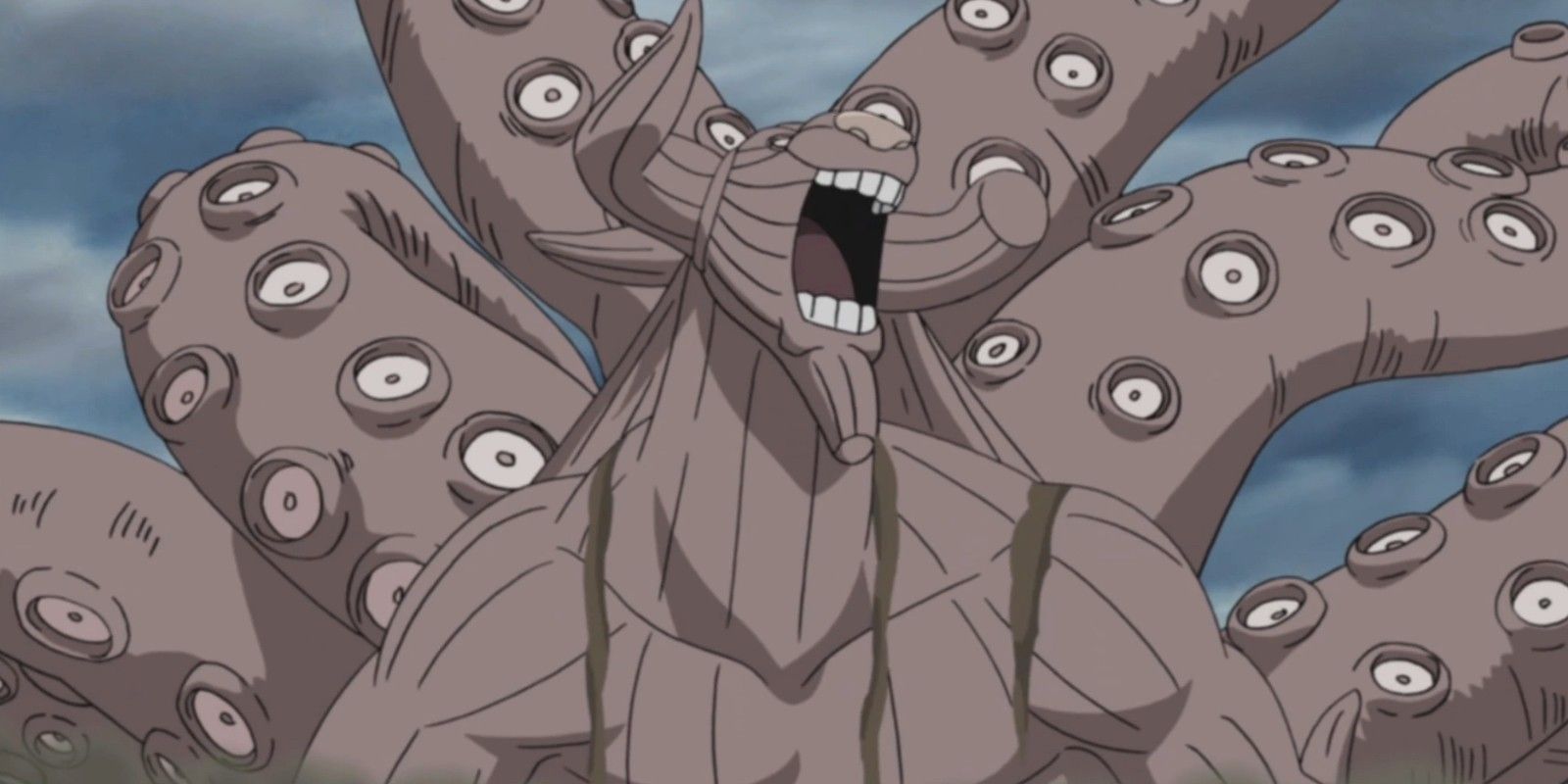
Gyuki was sold to the Hidden Cloud village along with Matatabi, but the nation struggled to find a Jinchuriki who could control it. One of these was Blue B, the nephew of the Third Raikage, but after Gyuki went on a rampage, the Raikage was forced to seal him away, causing his nephew’s tragic death. Gyuki was ultimately sealed within Killer Bee, the Third Raikage’s adopted son, who surprisingly proved himself a compatible host. Bee befriended his Bijuu through the power of rap… or something, and their relationship became perfectly two-way, allowing the ninja to draw out Eight-Tails’ power at will. Even after Gyuki was forcibly extracted from Killer Bee during the Fourth Great Shinobi War, he was later re-sealed into his former host. Gyuki is an ox-like yokai with sheep horns and tentacle tails, and is regarded as the second strongest bijuu.
Nine-Tails – Kurama
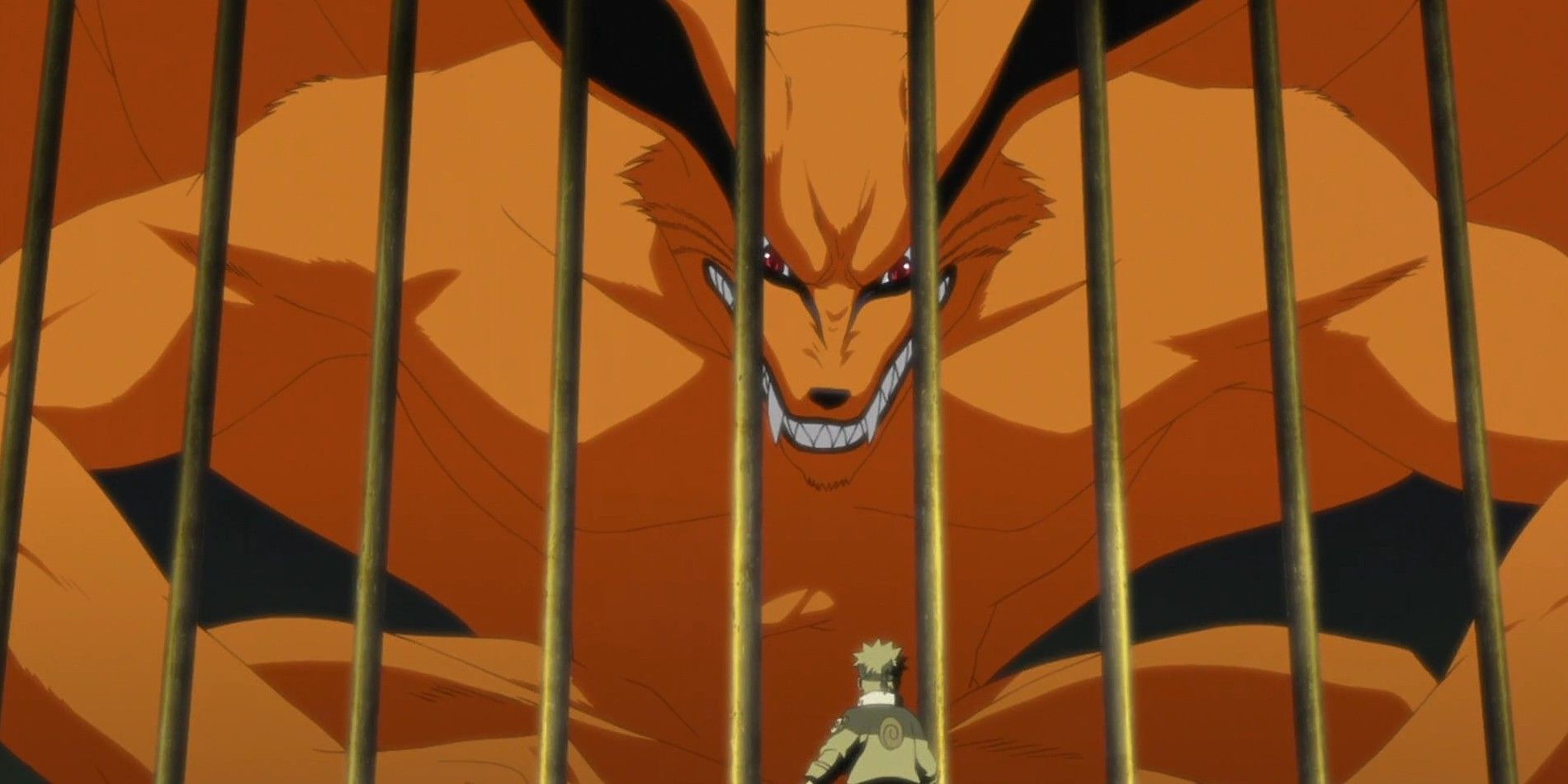
As the only Bijuu not captured by the First Hokage, Kurama roamed in the wild for many years until he was found by Madara Uchiha and forced to fight Hashirama. The First Hokage emerged victorious, and Kurama was sealed within his wife, Mito Uzumaki, before being transferred to Kushina Uzumaki. Despite valiant attempts to protect Kushina during her labor, Obito extracted Kurama and wreaked havoc on the Hidden Leaf. Eventually, Kushina and Minato restrained Kurama and sealed half the demon fox in the Fourth Hokage himself, and the other half in their newborn son – a certain Naruto Uzumaki. Kurama resembles a kitsune, a mythical Japanese nine-tailed fox, and is regarded as the most powerful of the Bijuu. Initially, Kurama would only offer his aid when Naruto’s life was in danger. With help from his mother, Naruto harnessed Kurama’s power, but only by becoming friends was the full potential of their Jinchuriki and Bijuu partnership unleashed.
In Boruto: Naruto Next Generations, Kurama reveals a whole new level to Naruto’s Jinchuriki power – Baryon Mode. The Seventh Hokage literally burns through his Bijuu’s chakra to defeat Isshiki Otsutsuki, not realizing that doing so would actually kill the Nine-Tails forever.
The Ten Tails (Juubi)
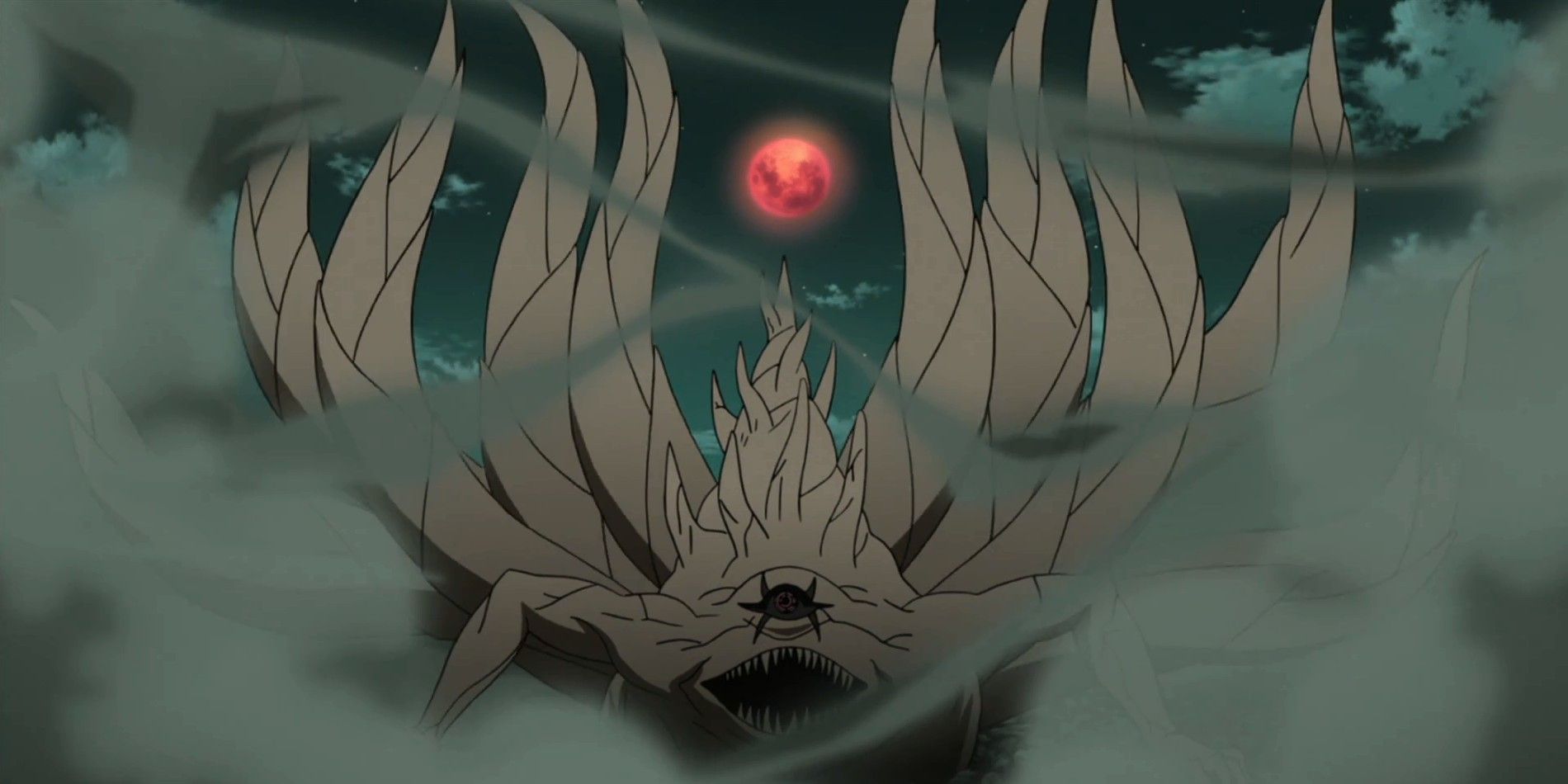
All above Tailed Beasts listed above were created through the Juubi – the ten-tailed beast brought to Earth by the dimension-hopping Otsutsuki clan. Like the Otsutsuki, the exact origin of the Ten-Tails is unknown. The villains travel to other worlds in pairs and unleash their Juubi, which transforms into a God Tree and, under the right conditions, yields a chakra fruit. These tasty treats sustain the Otsutsuki clan’s long lives and incredible power. Despite being the progenitor of Naruto’s Tailed Beasts, three powerful characters have played host to the Juubi – the Sage of Six Paths, Obito Uchiha, and Madara Uchiha. The power of the Ten-Tails is virtually unlimited, with no affinity towards one nature over another.
Isshiki Otsutsuki’s Juubi
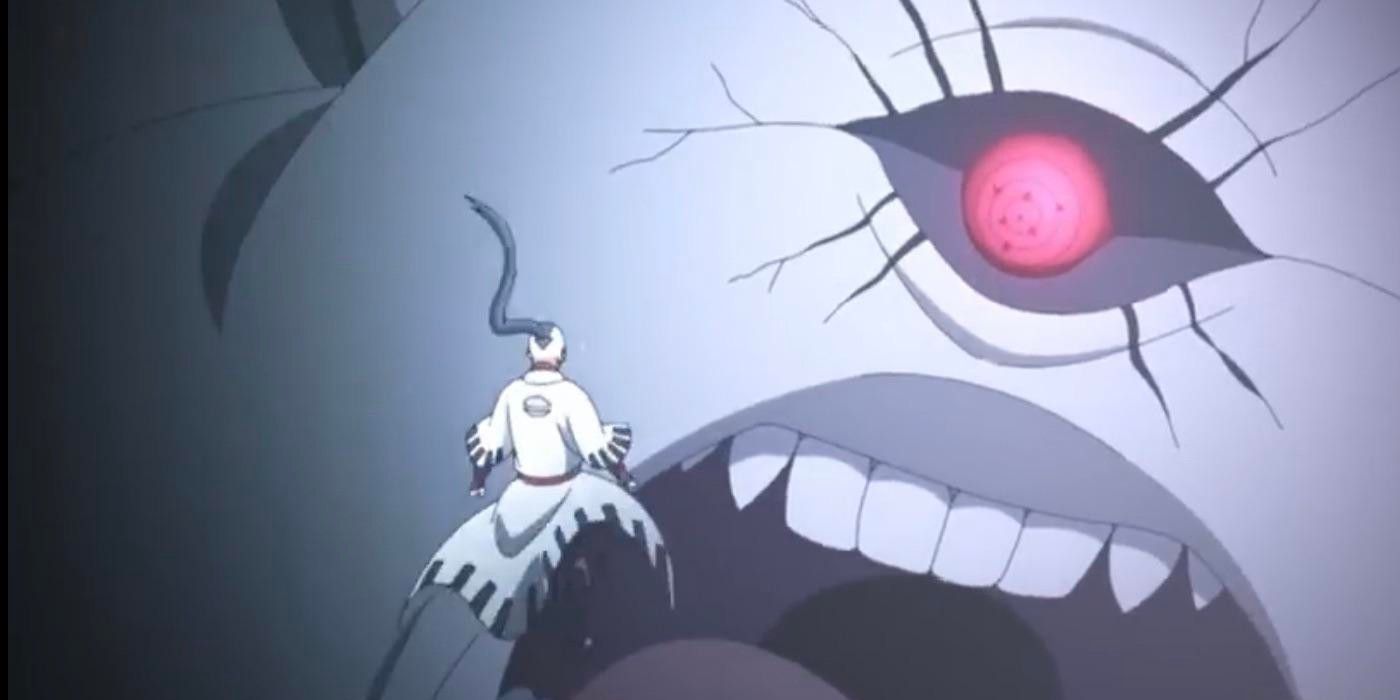
As if one Juubi wasn’t bad enough in Naruto, the Boruto: Naruto Next Generations sequel series introduces a second monster. Boruto alters Kaguya Otsutsuki’s backstory, revealing that she and Isshiki arrived together, only for the Rabbit Goddess to betray her partner and steal the Juubi (and, more importantly, its chakra fruit) for herself. Isshiki survived in the body of a human monk called Jigen, plotting his revenge and founding the villainous organization known as Kara. At some point during this period, Isshiki took possession of another Ten-Tails, which he keeps in an alternate dimension under constant guard, and is only accessible to those capable of dimensional travel, such as Sasuke Uchiha. Though Boruto hasn’t yet revealed the origin of Isshiki’s Ten Tails, the beast is clearly smaller and younger than Kaguya’s from the Fourth Great Shinobi War. Isshiki’s goal – and the entire purpose of Kara – is to turn this Juubi into a God Tree, and grow yet another chakra fruit from Earth’s population.
Aside from the bonus Juubi, Boruto completely changes the landscape of the Tailed Beasts compared to Naruto. Gaara retains Shukaku and Killer Bee keeps Gyuki, while the rest are released, maintaining a chakra bond with Naruto Uzumaki. Boruto’s anime-only Urashiki arc reveals the Two-Tails, Five-Tails and Seven-Tails all separated themselves from civilization, fearing humans might capture them once again. Kurama, of course, remained within Naruto before sacrificing himself so his Jinchuriki could access Baryon Mode.
Link Source : https://screenrant.com/naruto-tailed-beasts-bijuu-jinchuriki-powers-explained/
